Confession time: I used to be a carb queen. Pasta, bread, rice – you name it, I loved it. But after years of feeling sluggish and struggling with my weight, I decided to give low-carb eating a try. And let me tell you, it was a total game-changer! Not only did I finally shed those stubborn pounds, but I also had more energy, better digestion, and clearer skin.
The best part? I didn’t have to sacrifice flavor!
I discovered a whole new world of delicious low-carb recipes that left me feeling satisfied and energized, not deprived and hangry. That’s why I’m so excited to share this 7-day low-carb meal plan with you. It’s packed with flavor, variety, and all the nutrients you need to feel your absolute best. So, get ready to ditch the bland diet food and embrace a delicious, healthy lifestyle that will actually make you excited to eat!
Why This Meal Plan is a Game-Changer

Okay, let’s dive into why this meal plan isn’t your average, boring diet. We’re not just talking about another list of foods to eat and avoid (although we’ve got that too, don’t worry!). This plan is designed to be your partner in crime on your weight loss journey, and here’s why:
-
It’s all about flavor: Say goodbye to bland chicken breasts and steamed broccoli! This plan is packed with mouthwatering recipes that will make your taste buds sing. We’re talking zesty fajitas, creamy avocado chicken salad, and even decadent chocolate chia pudding (yes, really!).
-
You won’t feel deprived: We believe that healthy eating should be enjoyable, not a punishment. That’s why this plan includes plenty of healthy fats, fiber, and protein to keep you feeling satisfied and energized, not starving and cranky.
-
It’s sustainable: This isn’t a quick-fix fad diet that you’ll abandon after a week. It’s a lifestyle change that you can actually stick to, with flexible options for when life gets busy or you’re just craving something different.
-
It’s based on science: Low-carb diets have been shown to be effective for weight loss and improving health markers like blood sugar and cholesterol levels. This plan takes the guesswork out of it, providing you with a well-balanced, science-backed approach to healthy eating.
-
It’s not just about the food: We’ll also be sharing tips on how to incorporate exercise, manage stress, and get enough sleep, because a healthy lifestyle is about so much more than what you eat.
But don’t just take our word for it! Imagine waking up to a fluffy omelet filled with veggies and feta cheese, followed by a satisfying lunch of chipotle-lime cauliflower tacos. And for dinner? How about a flavorful salmon dish with roasted vegetables? Sounds pretty good, right? That’s what a day on this meal plan looks like.
So, are you ready to ditch the diet mindset and embrace a delicious, sustainable way of eating that will actually help you reach your goals? Let’s get cooking!
[Read: 3 Secrets to Making Healthy Eating Feel Like a Treat, Not a Chore]
The Lowdown on Low-Carb: Your Secret Weapon for Success

Alright, let’s get down to the nitty-gritty of what “low-carb” really means. Don’t worry, it’s not as complicated as it sounds!
Carbs 101: In a nutshell, carbohydrates are one of the main macronutrients our body uses for energy. They come in different forms:
- Simple carbs: These are the sugars found in fruits, milk, and processed foods like candy and soda. They’re quickly digested and can lead to blood sugar spikes and crashes.
- Complex carbs: These are found in whole grains, legumes, and starchy vegetables. They’re digested more slowly and provide longer-lasting energy.
Why go low-carb? Reducing your intake of refined carbs (like white bread and sugary snacks) and focusing on complex carbs can lead to:
- Weight loss: By cutting back on carbs, your body starts burning stored fat for energy instead. This can lead to significant weight loss, especially in the initial stages of a low-carb diet.
- Improved blood sugar control: Low-carb diets have been shown to help regulate blood sugar levels, making them beneficial for people with diabetes or insulin resistance.
- Increased energy levels: By focusing on complex carbs, you’ll experience more stable energy levels throughout the day, without the energy crashes that often follow sugary snacks.
- Reduced cravings: When you cut back on sugar and refined carbs, your cravings for these foods tend to decrease over time.
What’s on the low-carb menu? This meal plan is all about filling your plate with delicious, nutrient-dense foods that will keep you feeling full and satisfied while still keeping your carb intake in check.
Here are some of the superstars of this plan:
- Non-starchy vegetables: Think leafy greens, broccoli, cauliflower, asparagus, and peppers. These veggies are low in carbs and high in fiber, vitamins, and minerals.
- Healthy fats: Avocados, nuts, seeds, olive oil, and coconut oil are all excellent sources of healthy fats that will keep you feeling full and satisfied.
- Lean protein: Chicken, fish, turkey, eggs, and tofu are all great options for getting your protein fix.
- Low-sugar fruits: Berries, apples, and citrus fruits are all lower in carbs and can be enjoyed in moderation.
Remember, this isn’t about eliminating carbs completely, but rather choosing the right kinds of carbs and focusing on whole, unprocessed foods. This approach will not only help you reach your weight loss goals but also improve your overall health and well-being.
[Read: The 5 ‘Healthy’ Carbs That Might Be Sabotaging Your Weight Loss]
What’s on the Menu? A Week of Flavorful Fuel on 1500 Calories

Alright, buckle up your taste buds, because we’re about to take them on a delicious low-carb journey! This 7-day, 1500-calorie meal plan is packed with variety to keep things interesting and prevent those dreaded “diet food blues.”
Each day is carefully crafted to provide you with balanced nutrition, satisfying flavors, and enough variety to keep you excited about your meals. You’ll find a mix of savory and sweet options, from hearty breakfasts to light lunches and fulfilling dinners, all while staying within your 1500-calorie goal. And don’t worry, we haven’t forgotten about snacks! We’ve got you covered with healthy options to keep your energy levels up throughout the day.
To give you a taste of what’s in store, here’s a sample of the meal plan:
Before you jump into the 7-day plan, grab your free Weight Loss Checklist to guide you step-by-step throughout the diet, ensuring you stay on track and maximize your success. This checklist will help you organize your meals, track your progress, and stay focused on reaching your goals. Sign up now and get your free checklist!”
Day 1
- Breakfast (264 cal, 18g carbs): Greek yogurt (1.5 cups, nonfat, plain), blackberries (1/2 cup), chopped walnuts (2 tablespoons).
- Morning Snack (170 cal, 21g carbs): 2 clementines, 10 almonds (about 1/2 ounce).
- Lunch (360 cal, 30g carbs):White Bean & Veggie Salad (1 serving).
- Afternoon Snack (114 cal, 14g carbs): Raspberries (1 cup), 1 string cheese (about 1 ounce).
- Dinner (555 cal, 37g carbs): Ginger-Tahini Oven-Baked Salmon & Vegetables (1 serving).
- Evening Snack (50 cal, 6g carbs): 1 medium apple.
Total: 1513 calories
Day 2
- Breakfast (288 cal, 22g carbs):Muffin-Tin Omelets with Feta & Peppers (1 serving), medium orange.
- Morning Snack (236 cal, 62g carbs): Large pear, 1 medium banana.
- Lunch (344 cal, 47g carbs):Chipotle-Lime Cauliflower Taco Bowls (1 serving).
- Afternoon Snack (102 cal, 20g carbs): Sliced large bell pepper, 1 medium carrot.
- Dinner (418 cal, 14g carbs):Homemade Chicken Tenders with Everything Bagel Seasoning over Salad (1 serving), 1/2 avocado.
- Evening Snack (123 cal, 7g carbs): 1 cup low-fat cottage cheese.
Total: 1511 calories
Day 3
- Breakfast (288 cal, 22g carbs):Muffin-Tin Omelets with Feta & Peppers (1 serving), medium orange.
- Morning Snack (105 cal, 27g carbs): 2 clementines, 1 boiled egg (large).
- Lunch (344 cal, 47g carbs):Chipotle-Lime Cauliflower Taco Bowls (1 serving).
- Afternoon Snack (131 cal, 35g carbs): Large pear.
- Dinner (525 cal, 25g carbs):Chicken Cutlets with Sun-Dried Tomato Cream Sauce (1 serving), steamed broccoli florets (3 cups).
- Evening Snack (115 cal, 14g carbs): 1 medium apple.
Total: 1543 calories
Day 4
- Breakfast (306 cal, 45g carbs):Blueberry Almond Chia Pudding (1.5 servings).
- Morning Snack (70 cal, 18g carbs): 2 clementines.
- Lunch (344 cal, 47g carbs):Chipotle-Lime Cauliflower Taco Bowls (1 serving).
- Afternoon Snack (306 cal, 8g carbs): Muffin-Tin Omelets with Feta & Peppers (1 serving), 1 string cheese (about 1 ounce).
- Dinner (376 cal, 21g carbs):Sheet-Pan Maple-Mustard Pork Chops & Carrots (1 serving).
- Evening Snack (128 cal, 14g carbs): 1 medium apple, 1 tablespoon peanut butter.
Total: 1530 calories
Day 5
- Breakfast (306 cal, 45g carbs):Blueberry Almond Chia Pudding (1.5 servings).
- Morning Snack (132 cal, 8g carbs): Nonfat plain Greek yogurt (1 cup).
- Lunch (344 cal, 47g carbs):Chipotle-Lime Cauliflower Taco Bowls (1 serving).
- Afternoon Snack (154 cal, 6g carbs): Dry-roasted unsalted almonds (20 pieces, about 1 ounce).
- Dinner (490 cal, 27g carbs):No-Noodle Eggplant Lasagna (1 serving), Traditional Greek Salad (1 serving).
- Evening Snack (100 cal, 25g carbs): 1 medium banana.
Total: 1526 calories
Day 6
- Breakfast (264 cal, 18g carbs): Greek yogurt (1.5 cups, nonfat, plain), blackberries (1/2 cup), chopped walnuts (2 tablespoons).
- Morning Snack (191 cal, 37g carbs): Large pear, 10 almonds (about 1/2 ounce).
- Lunch (348 cal, 30g carbs):No-Noodle Eggplant Lasagna (1 serving), pomegranate seeds (1/3 cup).
- Afternoon Snack (174 cal, 46g carbs): Large apple.
- Dinner (428 cal, 17g carbs):Tofu & Vegetable Curry with Zucchini Noodles (1 serving).
- Evening Snack (145 cal, 13g carbs): Greek yogurt with honey (1/2 cup Greek yogurt, 1 teaspoon honey).
Total: 1550 calories
Day 7
- Breakfast (288 cal, 22g carbs):Muffin-Tin Omelets with Feta & Peppers (1 serving), medium orange.
- Morning Snack (170 cal, 24g carbs): Medium carrots, sliced (4), 1 boiled egg (large).
- Lunch (337 cal, 26g carbs):No-Noodle Eggplant Lasagna (1 serving), sliced medium bell pepper.
- Afternoon Snack (131 cal, 35g carbs): Large pear.
- Dinner (519 cal, 13g carbs):Shrimp Cauliflower Fried Rice (1 serving), mixed greens (2 cups), Homemade Vinaigrette with Sesame & Ginger (1 serving), 1/2 avocado.
- Evening Snack (120 cal, 12g carbs): Frozen yogurt (1/2 cup).
Total: 1565 calories
Remember, this plan is just a starting point. Feel free to swap out meals or ingredients to suit your preferences or dietary needs. The most important thing is to choose foods that you enjoy and that make you feel good, all while staying within your 1500-calorie limit.
So, get ready to ditch the dull and boring meals and discover a whole new world of flavor on this low-carb adventure!
[Read: My 3 Sunday Meal Prep Secrets That Make Low-Carb Weekdays Effortless]
Your Low-Carb Shopping List: Stock Up on Goodness

Alright, grocery time! Let’s fill up your cart with all the deliciousness that will fuel your low-carb journey. Here’s your go-to shopping list, packed with nutritious and flavorful options:
Veggies Galore:
- Leafy Greens: Spinach, kale, romaine lettuce, arugula – stock up on these nutrient-rich powerhouses.
- Cruciferous Veggies: Broccoli, cauliflower, Brussels sprouts, cabbage – these versatile veggies are low in carbs and high in fiber.
- Other Non-Starchy Veggies: Peppers (all colors!), zucchini, cucumber, asparagus, mushrooms, onions, garlic – add a rainbow of colors and flavors to your meals.
Protein Power:
- Poultry: Chicken breasts or thighs, ground turkey – lean and versatile options for any meal.
- Fish: Salmon, tuna, cod, trout – packed with omega-3 fatty acids and delicious grilled, baked, or pan-fried.
- Eggs: A breakfast staple and a great source of protein for any time of day.
- Tofu or Tempeh: Plant-based protein options for vegetarian or vegan diets.
- Lean Beef: Opt for lean cuts like sirloin or flank steak, or go for ground beef with a lower fat percentage.
Healthy Fats:
- Avocados: Creamy, delicious, and loaded with heart-healthy fats and fiber.
- Nuts and Seeds: Almonds, walnuts, chia seeds, flaxseeds – perfect for snacking or adding to salads and yogurt.
- Olive Oil: A versatile cooking oil and a great source of monounsaturated fats.
- Coconut Oil: Adds a subtle tropical flavor to dishes and is great for high-heat cooking.
- Avocado Oil: Another healthy option for cooking and dressings.
Low-Carb Fruits:
- Berries: Strawberries, blueberries, raspberries, blackberries – naturally sweet and packed with antioxidants.
- Apples: A classic low-carb snack that’s high in fiber.
- Citrus Fruits: Oranges, lemons, limes, grapefruits – add a tangy twist to your dishes and provide a dose of vitamin C.
Dairy (Optional):
- Greek Yogurt: High in protein and low in carbs, perfect for breakfast or a snack.
- Cheese: Cheddar, mozzarella, feta, goat cheese – enjoy in moderation as part of your meals.
Pantry Staples:
- Spices and Herbs: Get creative with flavors like cumin, coriander, chili powder, paprika, oregano, basil, and thyme.
- Vinegar: Balsamic, apple cider, red wine – perfect for making dressings and marinades.
- Mustard: Dijon, whole grain, spicy brown – adds a zesty kick to your dishes.
Bonus Tip: Don’t be afraid to try new things! Experiment with different vegetables, spices, and cooking methods to keep your meals exciting and flavorful.
With this shopping list in hand, you’ll be well on your way to a week of delicious, satisfying, and low-carb meals. So grab your reusable bags and get ready to stock up on goodness!
Ditch the Duds: Foods to Avoid for Optimal Results

Now that we’ve filled your shopping cart with all the good stuff, let’s talk about what to leave on the shelves. Remember, this isn’t about deprivation, but rather making smart choices to support your weight loss goals and overall health. Think of it as a temporary break-up with these not-so-friendly foods:
Sugar-Loaded Sneaky Snacks:
- Sugary Drinks: Soda, juice, sweetened iced tea, energy drinks – these liquid calories are a major no-no on a low-carb diet. They’ll spike your blood sugar, leave you craving more, and sabotage your progress.
- Candy and Desserts: Cookies, cakes, pastries, ice cream, chocolate bars – these sweet treats are loaded with sugar and refined carbs, which will quickly derail your efforts.
- Processed Snacks: Chips, crackers, granola bars, cereal – these often contain hidden sugars and refined carbs, even if they seem “healthy.”
Refined Carb Culprits:
- White Bread and Pasta: These are made from refined grains that have been stripped of their fiber and nutrients. They’ll leave you feeling hungry soon after eating and can lead to blood sugar spikes.
- White Rice: Similar to white bread and pasta, white rice is a refined carb that lacks fiber and nutrients.
- Baked Goods: Muffins, doughnuts, pastries – these are usually made with refined flour, sugar, and unhealthy fats.
Unhealthy Fats:
- Fried Foods: French fries, fried chicken, onion rings – these are loaded with unhealthy fats and calories.
- Processed Meats: Bacon, sausage, hot dogs – these are high in saturated fat and sodium, which can contribute to heart disease and other health problems.
- Full-Fat Dairy: While dairy can be part of a healthy diet, full-fat versions like whole milk, butter, and ice cream are high in saturated fat and calories. Opt for low-fat or non-fat options instead.
Sneaky Carb Bombs:
- Starchy Vegetables: Potatoes, corn, peas – while technically vegetables, these are higher in carbs than non-starchy options like leafy greens and broccoli. Enjoy them in moderation.
- High-Sugar Fruits: Bananas, grapes, mangoes, dried fruits – while fruits are generally healthy, these are higher in sugar and carbs than berries or citrus fruits. Limit your intake or avoid them altogether.
- Alcohol: Beer, wine, cocktails – alcohol is not only high in calories, but it can also lower your inhibitions and lead to poor food choices. If you do choose to drink, do so in moderation and opt for lower-carb options like dry wine or spirits with sugar-free mixers.
Remember, this is not a “forever” list. Once you’ve reached your weight loss goals and are in maintenance mode, you may be able to reintroduce some of these foods in moderation. But for now, focus on filling your plate with whole, unprocessed foods that will nourish your body and support your journey to a healthier you.
Beyond the Plate: Tips for Lasting Success
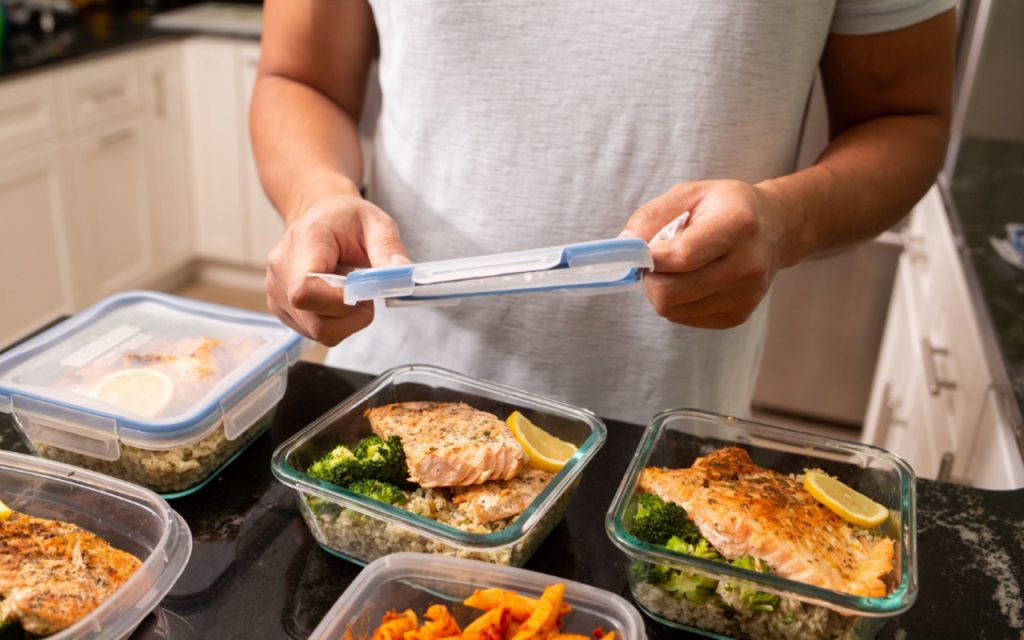
Alright, my friend, you’ve got the meal plan, the shopping list, and the lowdown on low-carb eating. But let’s be real, sticking to any plan takes more than just knowing what to eat. It’s about creating sustainable habits and a healthy lifestyle that you can actually enjoy. So, here are a few tips to help you rock this low-carb journey and make it a lasting success:
-
Embrace the Meal Prep: Planning and prepping your meals ahead of time can be a total game-changer. It not only saves you time and stress during the week but also helps you stay on track when hunger strikes. Set aside a few hours each week to chop veggies, cook proteins, and whip up some easy grab-and-go snacks. Trust me, future you will thank you!
-
Stay Hydrated: Water is essential for weight loss and overall health. Aim to drink at least eight glasses of water per day, and even more if you’re active. Not a fan of plain water? Jazz it up with some sliced fruit, cucumber, or herbs. Sparkling water is also a great low-carb option.
-
Get Moving: Exercise is not only crucial for weight loss but also for boosting your mood and energy levels. Find an activity you enjoy, whether it’s dancing, hiking, swimming, or lifting weights. Aim for at least 30 minutes of moderate-intensity exercise most days of the week.
-
Listen to Your Body: Pay attention to your hunger and fullness cues. Don’t be afraid to eat when you’re hungry, and stop eating when you’re satisfied, even if it means leaving food on your plate. Intuitive eating can be a powerful tool for long-term success.
-
Don’t Stress About Slip-Ups: We all have off days, and that’s perfectly okay! If you indulge in a non-low-carb treat or miss a workout, don’t beat yourself up. Just get back on track with your next meal or workout. Remember, progress over perfection is the goal!
-
Find Your Support System: Having a support system can make a huge difference in your weight loss journey. Share your goals with friends or family, join an online community, or find a workout buddy. Surround yourself with people who will cheer you on and keep you motivated.
-
Be Kind to Yourself: Weight loss takes time and effort, and there will be ups and downs along the way. Be patient with yourself, celebrate your victories, and don’t give up on yourself if you face setbacks. Remember, you’re doing this for YOU!
By incorporating these tips into your daily routine, you’ll be well on your way to not only achieving your weight loss goals but also creating a healthier and happier lifestyle. So, go ahead, embrace these habits, and get ready to rock this low-carb life!
Ready, Set, Flavor! Your Weight Loss Journey Starts Now
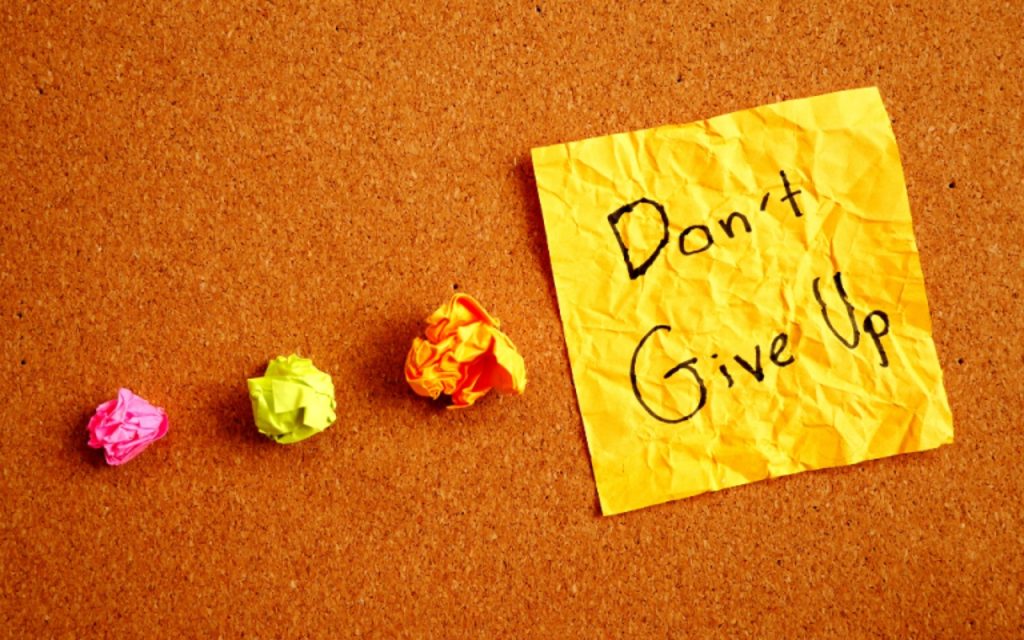
Well, my friend, you’ve reached the end of this flavorful guide, and it’s time to take the reins and embark on your low-carb adventure. But before you dive headfirst into the kitchen, let’s take a moment to set you up for success with a few final words of encouragement and some extra tips:
Embrace the Journey: Remember, this is not just a 7-day meal plan, but a lifestyle change. It’s about discovering a new way of eating that nourishes your body, satisfies your taste buds, and makes you feel amazing. So, enjoy the process, experiment with flavors, and find what works best for you.
Celebrate Small Wins: Every step you take towards a healthier you is worth celebrating! Whether it’s swapping out sugary drinks for water, trying a new recipe, or going for a walk after dinner, acknowledge your efforts and be proud of your progress.
Listen to Your Body: Your body is wise and will tell you what it needs. Pay attention to your hunger and fullness cues, and don’t hesitate to adjust the meal plan to fit your individual needs. Maybe you need an extra snack on days you’re more active, or maybe you prefer to swap out certain ingredients for others. Trust your instincts and make this plan your own.
Find Your Low-Carb Community: Surround yourself with like-minded people who are also on a low-carb journey. Join online forums or social media groups, attend cooking classes, or find a workout buddy who shares your goals. Sharing your experiences, challenges, and successes with others can be incredibly motivating and inspiring.
Don’t Give Up: There will be bumps in the road, and that’s okay. If you slip up and have a high-carb day, don’t let it discourage you. Just pick yourself up, dust yourself off, and get right back on track. Remember, progress over perfection is the key!
Now, go forth and conquer those cravings, crush those goals, and savor every delicious bite of your low-carb meals! This is your time to shine and become the healthiest, happiest version of yourself. So, what are you waiting for? Let’s get cooking!
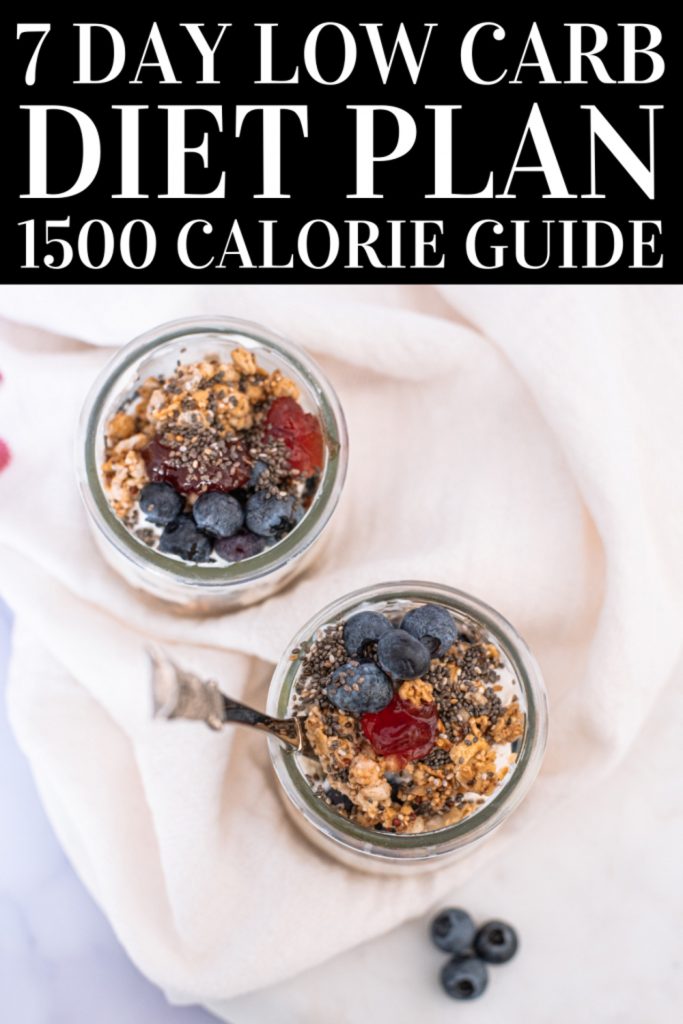


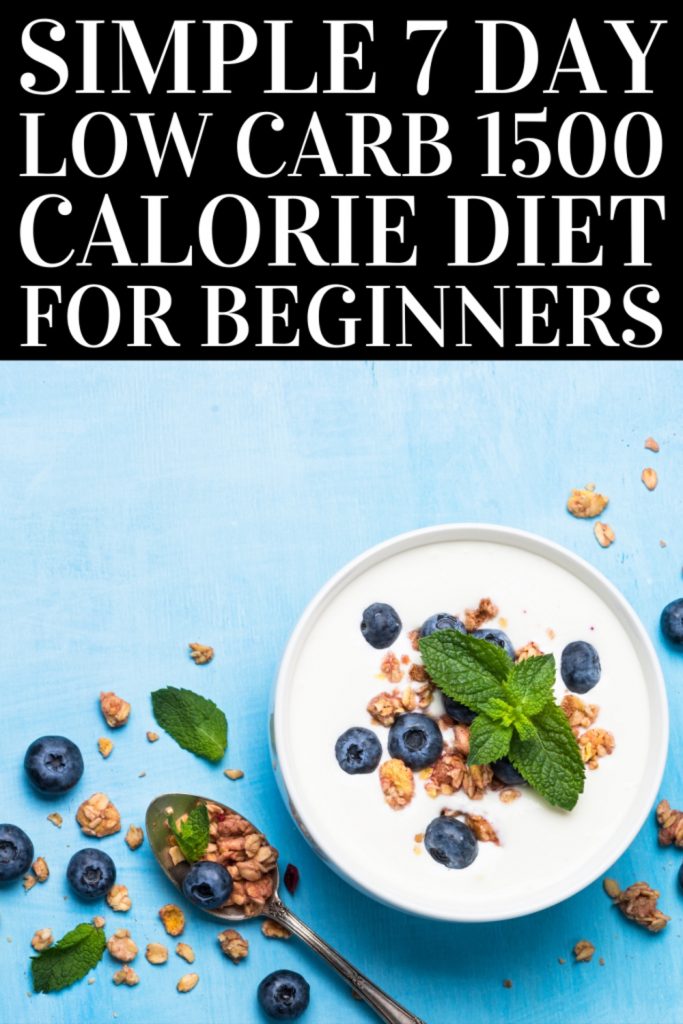
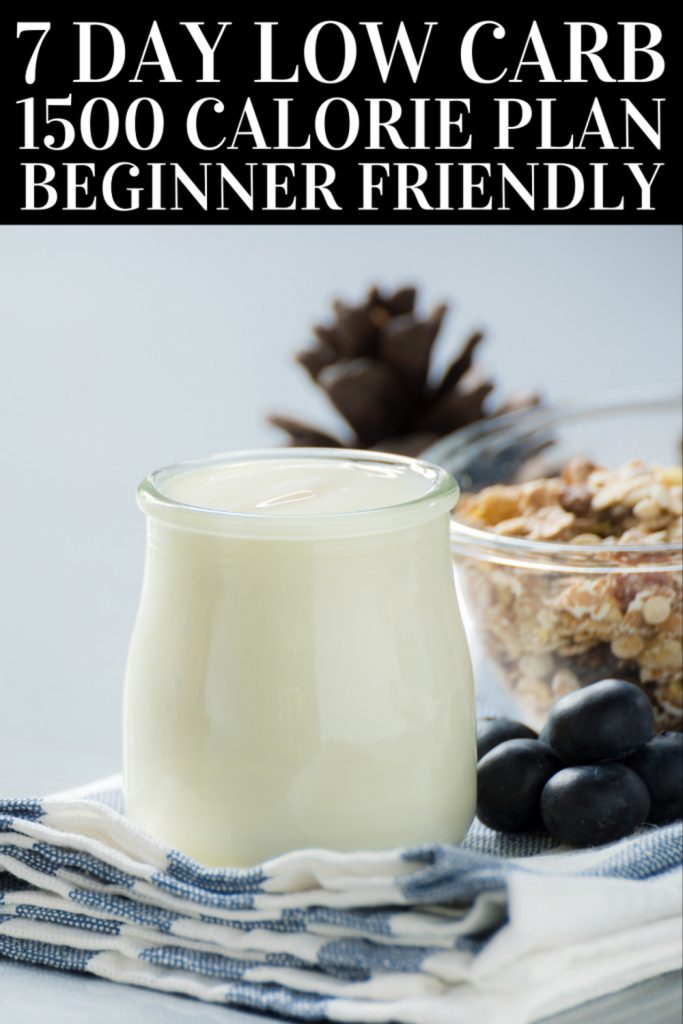

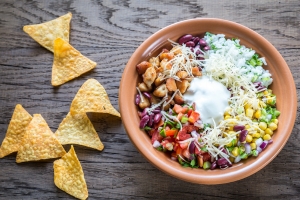
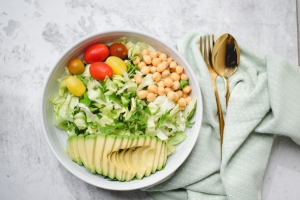
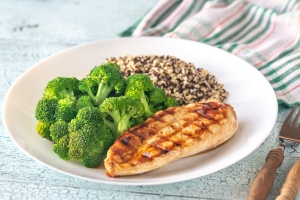

14 Responses
I’m loving this 7-day, 1500-calorie low-carb meal plan! It’s packed with delicious recipes that make sticking to a low-carb diet so much easier. I’ve already started feeling the benefits in just a few days – more energy and noticeable weight loss. The meals are satisfying and full of flavor, which keeps me motivated. If you’re looking for a tasty and effective way to kickstart your weight loss, this meal plan is definitely worth trying!
Thank you for your wonderful feedback! We’re thrilled to hear that you’re enjoying the 7-day, 1500-calorie low-carb meal plan and seeing positive results. It’s fantastic to know that the recipes are both delicious and effective in helping you achieve your weight loss goals. If you have any questions or need more meal ideas, feel free to reach out. We’re here to support you on your journey to better health!
This meal plan looks great, but I’m a vegetarian. Can I still follow it, and what substitutions would you recommend?
Hi Sarah, thanks for the question! Yes, you can definitely adapt this plan to a vegetarian lifestyle. You can replace the meat and fish with plant-based proteins like tofu, tempeh, lentils, and beans. Eggs and Greek yogurt are also great protein sources if your diet allows. For example, you could swap the chicken in the Chipotle-Lime Cauliflower Taco Bowls for black beans or crumbled tofu. Just be mindful of the carb content of beans and lentils, and adjust your portions accordingly. There are plenty of delicious vegetarian low-carb recipes out there, so feel free to get creative! I hope this helps, and good luck on your journey!
1500 calories seems a bit low. I’m a pretty active guy. Will I have enough energy for my workouts on this plan?
Hi Michael, that’s a valid concern. 1500 calories might be low for some individuals, especially if you’re very active. This meal plan is a starting point, and you may need to adjust it based on your activity level and individual needs. If you’re feeling overly hungry or fatigued, try adding a healthy snack with protein and fat, like a handful of nuts or a hard-boiled egg. You can also increase your portion sizes slightly, particularly of non-starchy vegetables. It’s important to listen to your body and adjust the plan accordingly. You may also want to consult with a doctor or registered dietitian to determine the appropriate calorie intake for your specific needs.
This meal plan sounds really good, but I’m a little worried about the 1500 calorie limit. I’m pretty active, and I’m not sure if that’s enough calories for me. Will I be starving all the time? Also, is it okay to workout while following a low-carb diet?
Hi Sarah, thanks for your comment! It’s great that you’re thinking about your individual needs and activity level. 1500 calories might be a good starting point for many, but it’s definitely not one-size-fits-all. If you’re very active, you might need more calories to fuel your workouts and prevent excessive hunger.
It’s important to listen to your body. If you find yourself feeling weak, constantly hungry, or unable to recover from your workouts, you may need to increase your calorie intake slightly. You can do this by adding extra healthy fats (like avocado or nuts), protein (like an extra egg or a piece of chicken), or even a small serving of complex carbs (like sweet potato or quinoa) to your meals, especially around your workout times.
Regarding exercise, it’s generally safe to work out while following a low-carb diet, but you might need to adjust your approach. Some people find that they have less energy for high-intensity workouts when they first start low-carb. It might be a good idea to start with moderate-intensity exercise and see how your body responds. You can also experiment with timing your carb intake around your workouts to provide more energy.
Ultimately, finding the right balance of calories and macronutrients is a personal journey. I encourage you to experiment and find what works best for you. Don’t hesitate to consult with a doctor or a registered dietitian for personalized advice, especially if you have any concerns about your activity level and dietary needs. They can help you determine the right calorie target and macronutrient ratio to support your goals while keeping you healthy and energized!
I’ve tried low-carb before, and I always end up getting bored with the food. Are there really enough options to keep things interesting long-term? I’m also a little worried about social situations – what do I do when I go out to eat with friends or family?
Hi Jessica, I totally understand your concern about food boredom! It’s a common challenge with any dietary change. The good news is that low-carb eating can be incredibly diverse and flavorful! This 7-day meal plan is just a starting point, and there are countless delicious low-carb recipes out there.
I encourage you to explore different cuisines, experiment with spices and herbs, and try new vegetables and proteins. Websites, cookbooks, and online communities are full of amazing low-carb recipes. You might be surprised at the variety you can achieve! Also, don’t be afraid to modify recipes to fit your preferences and make them low-carb friendly.
Regarding social situations, it’s definitely possible to navigate them while staying low-carb. Many restaurants offer low-carb options, or you can often modify dishes to fit your needs. For example, you can ask for a burger without the bun, order a salad with grilled chicken or fish (and ask for the dressing on the side), or choose a steak with steamed vegetables instead of potatoes.
Planning ahead is key. If you know where you’re going, check out the menu online beforehand and decide what you’ll order. Don’t be afraid to ask your server questions or request modifications. Most restaurants are happy to accommodate dietary requests.
And remember, it’s okay to enjoy a non-low-carb meal occasionally. The key is to make it a conscious choice and get back on track with your next meal. One meal won’t derail your progress. The goal is to find a sustainable way of eating that you can enjoy long-term, both at home and when you’re out and about. Don’t hesitate to reach out to online low-carb communities for support and tips on navigating social situations – you’ll find lots of people who have been in your shoes!
Alright, I’m giving this a shot! But I have one major concern: my social life. I love going out to eat with friends, and pizza is basically my love language. How am I supposed to navigate restaurant menus and happy hour without feeling like a total outcast? And does this mean I have to break up with pizza forever? Say it ain’t so!
Hi Sarah! I totally understand your concern – a social life is important! The good news is, you don’t have to become a hermit to eat low-carb. Many restaurants offer low-carb options, like salads with grilled chicken or fish, bunless burgers, or even steak. And for pizza, some places offer cauliflower crust or you could opt for a salad and just enjoy the company. As for breaking up with pizza forever, not necessarily! You can enjoy a slice occasionally, just be mindful of your portion size and make it fit into your overall carb limit for the day. It’s all about finding a balance that works for you and your lifestyle!
So, I’m all for healthy eating, but this meal plan seems a bit… meat-heavy. What about us vegetarians or those who just prefer to limit their meat intake? Are there any plant-based alternatives that fit into this low-carb framework? Also, I’m not a huge fan of cooking elaborate meals every day. Are these recipes complicated? My cooking skills are limited to boiling water and making toast, and even then, I sometimes mess it up…
Hi Ashley! Great question! While the sample plan does include meat, there are plenty of ways to adapt it for vegetarians or those who prefer a more plant-based approach. Tofu, tempeh, eggs, and cheese are excellent low-carb protein sources. You can also swap meat for more non-starchy veggies or add a side of quinoa or lentils in moderation. As for the cooking, don’t worry! Most of these recipes are pretty straightforward. I’ve included some simple options like salads and omelets for those days when you’re short on time or just don’t feel like cooking a big meal. And hey, we all have our kitchen mishaps – don’t sweat it! Just keep practicing, and you’ll be a low-carb chef in no time!